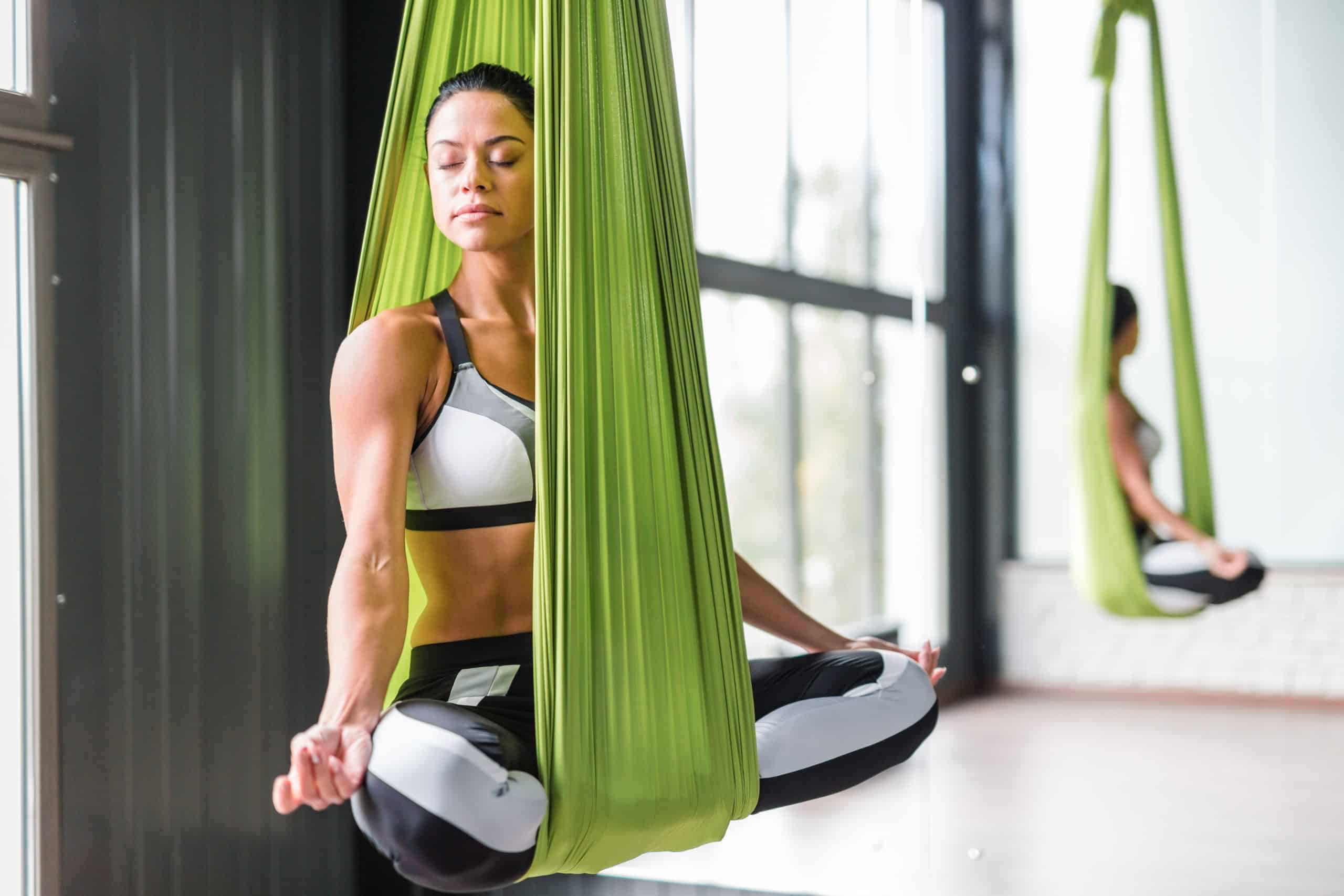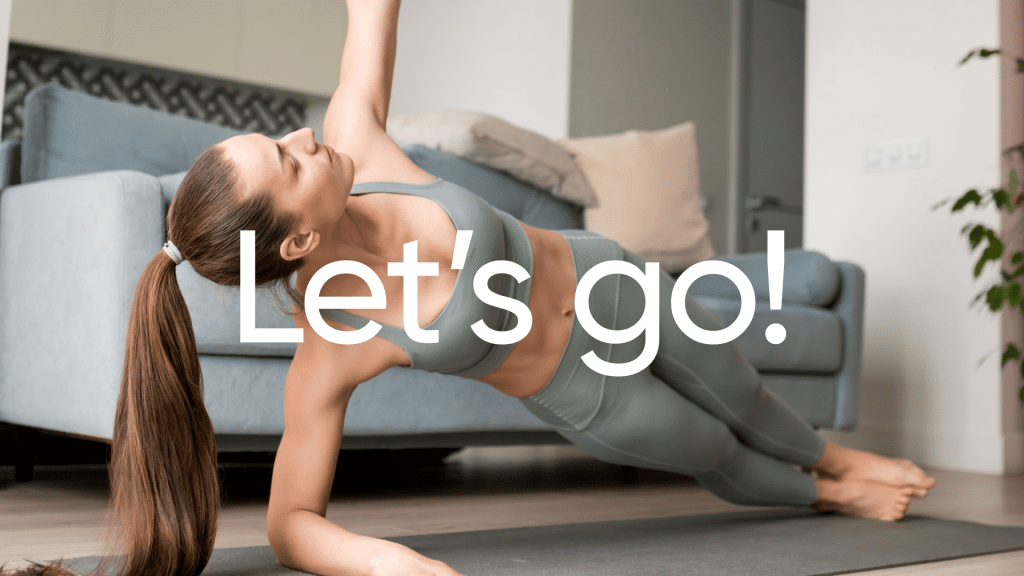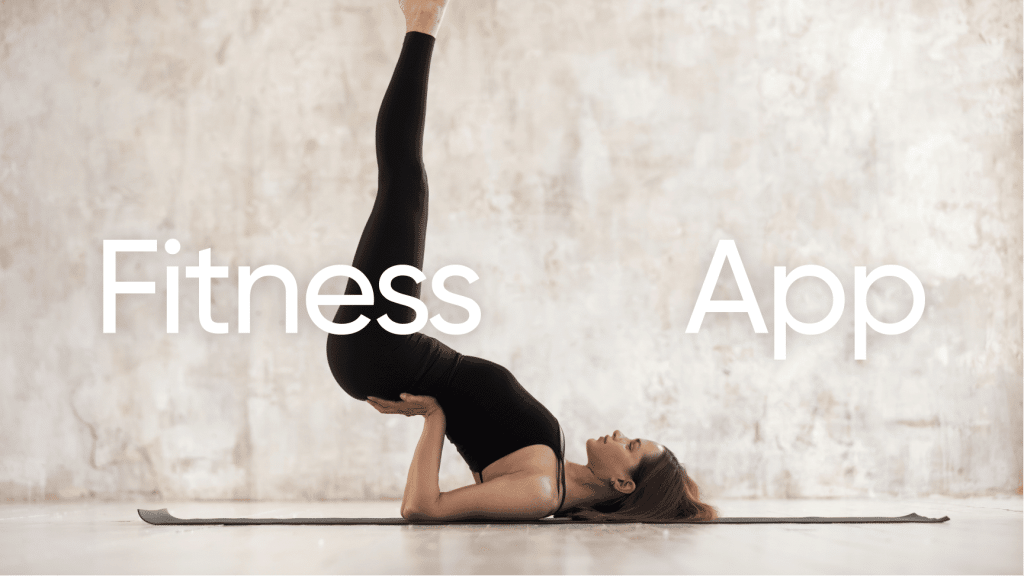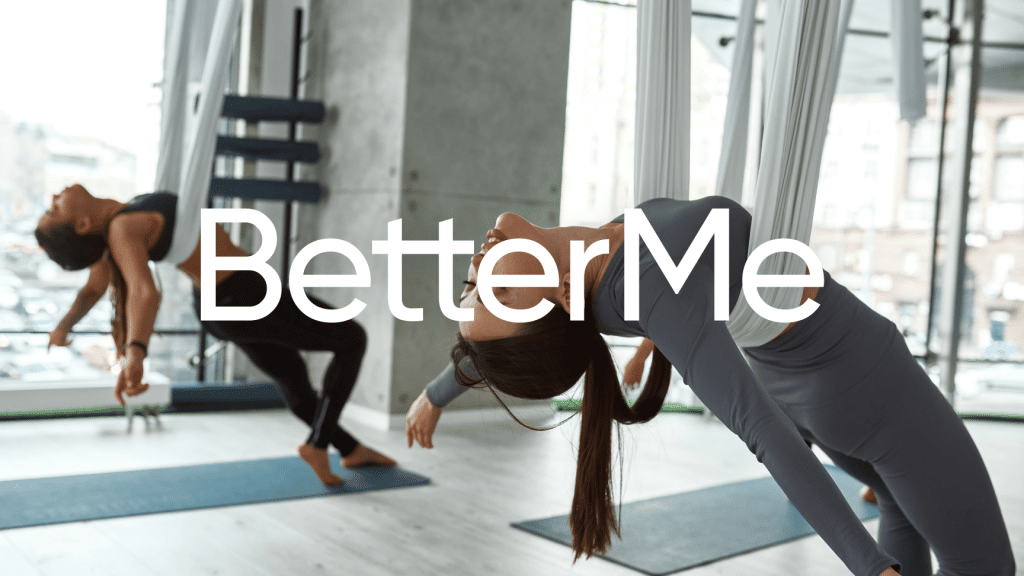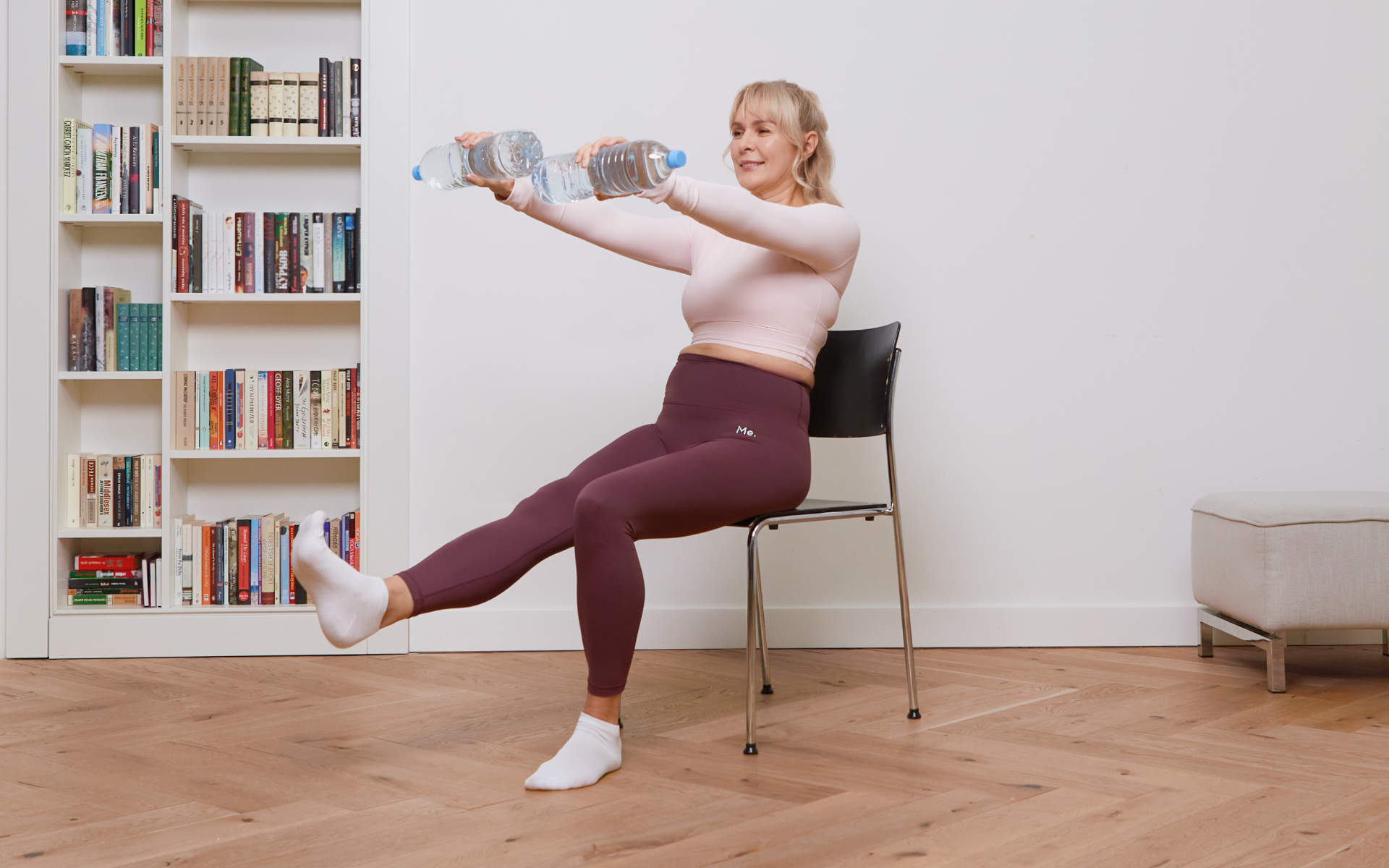Yoga is known for offering a plethora of physical and mental benefits, but one of the newest forms of yoga is taking those benefits to a whole new level (7). Aerial yoga (yes, it’s exactly as it sounds) is a practice that involves doing yoga poses while suspended in a hammock. It offers even more intense physical and mental benefits than traditional yoga, and it’s a unique way to challenge yourself. At first glance, the idea of being in a hammock while doing poses may seem intimidating. But once suspended, the feeling can be incredibly therapeutic and liberating. And to reassure you, we’re going to dive deep into the workings of the main component of the practice — the yoga hammock. Yoga hammocks are made from specialized fabrics designed to be strong and supportive enough for aerial yoga. With so many options on the market, it can be difficult to decide which type of yoga hammock is right for you. With this in mind, we’re here to help you understand the differences between them and to explain the benefits of each.
Is Aerial Yoga All It’s Cracked Up To Be?
First things first—should you even venture into the world of aerial yoga? If you want to experience intense bodywork and therapy, aerial yoga is the perfect way to do it. Here’s a closer look at the many benefits of aerial yoga (1):
1. Flex More Than You Thought Possible
Practically speaking, yoga is all about flexibility. Each pose is designed to stretch and strengthen different parts of your body, allowing for increased mobility (8).
When you add in the hammock as an aerial element, you can use gravity to assist you in the poses and gain a deeper stretch than you might on your own (4).
Think of it this way: When you’re on the ground, your body weight is evenly distributed and supports itself. But when you’re in the air, your body weight is actually pulling you into the pose. This allows for a greater range of motion and can generate more intense physical benefits than traditional yoga.
Even if you’re not particularly flexible, aerial yoga is a great way to increase your range of motion. And as you practice, you’ll find yourself getting more flexible with each session.
2. Reap The Benefits Of Inversion Therapy
Inversion therapy is a type of physical therapy that involves being upside down or at an inverted angle. It allows gravity to decompress the spine and take pressure off the discs and nerves (3).
Research into the benefits of inversion therapy is ongoing, but so far it’s been linked to improved blood circulation, enhanced muscular relaxation, and better lymphatic drainage. This can provide relief from back pain, headaches, and other conditions.
Aerial yoga is presented as a unique form of inversion therapy by allowing you to hang upside down and experience the same benefits with the support of a hammock.
Poses like the supported shoulder stand and headstand can be especially beneficial for those looking for relief from back pain or headaches.
Read More: Hanging Upside Down Benefits And Risks
3. Get A Intense Core Workout
Most traditional yoga poses require you to engage your core, but in aerial yoga it’s even more important (2) (6). Your abdominal muscles are working independently to keep you balanced and help you move through the poses.
This means that each session of aerial yoga is essentially an intense core workout, allowing you to develop strength and tone your muscles. And as you gain strength, you’ll find yourself able to do even more challenging poses and reap more physical benefits than ever before.
A strong core is linked to improved posture, increased balance, and better quality of life. Think of it this way: if your core is strong, your body will be able to do more (5).
4. De-Stress And Unwind
Stress, especially when chronic, can take a toll on your mental and physical health (9). Traditional yoga is ranked highly among stress-relieving activities, and aerial yoga is right along with it (10).
The combination of physical exertion and decompression help to soothe the body and mind, helping you let go of stress and tension. And as you become more proficient in the poses, you’ll be able to experience even deeper levels of relaxation.
5. Enjoy, Unparalleled Fun
Finally, aerial yoga is just plain fun. Whether you’re a seasoned yogi or new to the practice, it’s a great way to mix up your routine and add some excitement to your yoga practice.
And because it provides such a wide range of physical and mental benefits, you’ll be able to enjoy the practice without worrying about whether or not it’s “working.” After all, if you’re having fun, you’re doing something right.
I Need A Yoga Hammock, Now What?
Once you’ve decided to give aerial yoga a try, the next step is to get the right equipment. Investing in a quality yoga hammock is key to ensuring your practice is safe and effective.
Know The Types Of Yoga Hammocks And Their Uses
When shopping for a yoga hammock, it’s important to consider your needs and preferences. There are several different types of hammocks available, each with its own set of benefits.
1. Open-Ended Hammocks
Open-ended hammocks are the most common type of yoga hammock. They’re made from a single-ply fabric that’s reinforced with durable webbing.
Open-ended hammocks provide support while also allowing for freedom of movement, making them a great choice for beginner and experienced aerial yogis alike.
2. Closed-Ended Hammocks
Closed-ended hammocks are made from two layers of fabric that are reinforced with webbing. This makes them a bit more supportive than open-ended hammocks and better suited for inversions.
3. Multi-Grip Hammocks
Multi-grip hammocks are great for those who want to use their hammock for a variety of poses. They’re made with multiple layers of fabric and webbing, allowing you to grip the hammock and adjust your position for a more comfortable experience.
4. High-Strength Hammocks
High-strength hammocks are designed to hold up to heavy loads, making them great for advanced yogis and aerial acrobats. They’re made with thick fabric and reinforced webbing for extra support and durability.
Whether you’re a workout beast or just a beginner making your first foray into the world of fitness and dieting – BetterMe has a lot to offer to both newbies and experts! Install the app and experience the versatility first-hand!
Consider The Hammock Material And What That Means For Your Practice
The material of your yoga hammock is also an important factor to consider. Depending on the type and weight of fabric, you’ll have different levels of support and comfort.
For example, if you’re looking for extra support, opt for a hammock made from a heavier fabric like polyester. For a lighter, more flexible experience, go for a hammock made from nylon or rayon.
Material matters as far as care is concerned. Taking proper care of your hammock not only guarantees a longer lifespan, but it also affects the quality of your practice. You don’t want to worry about your hammock ripping or stretching while you’re in the middle of a pose.
Depending on the material, you may need to use special detergents and cleaning methods. Make sure you read your hammock’s care instructions carefully before you get started.
We find that an easy-to-clean, machine-washable fabric works best for beginners, people who don’t practice often, or practitioners who don’t want to worry about extra care.
Unless you’re a performer or someone who needs to create a specific aesthetic, you can pretty much stick with any material that is comfortable and supportive.
Consider The Right Size And Weight Capacity
When shopping for a yoga hammock, it’s important to consider the size and weight capacity. Size refers to the length of the hammock, while weight capacity is how much weight it can safely hold.
As a general rule of thumb, the larger the hammock, the more space you have to move. This is important for inversions and poses that require a lot of stretching. On the other hand, if you’re tight on space, a smaller hammock can be just as effective. Size decisions are hinged on your level of experience as much as your height and weight.
The weight capacity is also important, as it can determine whether or not the hammock is safe for use. Most yoga hammocks have a weight limit of 400 pounds or less, so make sure to check the weight capacity before buying.
Price Considerations
Yoga hammocks can range in price from under $50 to over $200, depending on the type of material and construction. Generally speaking, higher-end hammocks will offer better support and durability while lower-priced options may be more lightweight and less supportive.
However, there are plenty of great hammocks available at a variety of price points, so it’s important to shop around and compare. A good way to know for sure is by reading product reviews. These are usually a great indicator of quality and value.
Read More: Weight Loss Accessories: The Best And Often Overlooked Products To Help You Shed Pounds
Choose The Right Accessories
To get the most out of your yoga hammock, you’ll need some accessories. Most yogis will want to invest in a pair of aerial slings for extra support and comfort. You’ll also want to get a sturdy carabiner or two, depending on the type of setup you have.
It’s also a good idea to get a yoga mat for those times when you want to stay on the ground. Choosing the right yoga mat can also be tricky, but it’s essential to make sure you have adequate support and cushioning.
Consider the type of practice you plan to do, your body type, and the size of space that you’ll be using. For most people, a standard 4mm yoga mat will provide enough cushioning and support.
Finally, you’ll need to make sure that your yoga hammock is securely attached to whatever rig you’re using. You have these options; you can use ceiling mounts, wall-mounted rigs, or you could create a stand.
Each of these options has its own set of benefits: Ceiling mounts are great if you have a high ceiling, wall-mounted rigs offer more flexibility and height options, while stands provide extra stability and portability.
Which one you choose will depend on the type of practice you want to do and the space that you have available.
Safety Should Always Come First
No matter what type of yoga hammock you choose, safety should always be your top priority. Always inspect your equipment before use, and make sure to follow the manufacturer’s instructions for setup and cleaning.
When you’re ready to practice, start slow and be mindful of your body. If you feel any pain or discomfort, stop immediately and rest. Never force your body into a pose that doesn’t feel right.
And lastly, make sure to have a spotter present when you’re first starting out. A more experienced yogi can help you with technique and ensure that your hammock is securely attached.
What To Expect With Your Yoga Hammock
Using a yoga hammock can bring a whole new level of enjoyment to your practice. You’ll be able to explore positions and inversions that you never thought possible. But it’s important to remember that a yoga hammock is just one tool in your practice.
Your yoga practice should always be about progress and exploration, not perfection. Don’t be discouraged if things don’t come easily. A common complaint among yoga hammock users is that they feel dizzy after spending too much time upside down.
Feeling dizzy during or after aerial yoga happens because of several reasons:
-
Poor Breath Work
Taking a deep breath and holding it during asanas can raise carbon dioxide levels in your blood, resulting in dizziness. Prevent this by focusing on your breath and taking mindful breaths during each pose.
-
Transitioning Too Fast From One Move To Another
Going too quickly between poses can cause you to become dizzy or even disoriented. Instead, take your time and focus on making smooth transitions.
-
Performing Full Body Inversions Too Quickly
Your body needs to develop tolerance and strength to be able to perform full inversion poses on the yoga hammock. Take your time and progress gradually when attempting more challenging positions.
Lean and toned up body isn’t just a far-fetched fantasy. Check out the BetterMe app and watch it propel your weight loss journey into high gear!
Yoga Hammock FAQ
What Is Yoga In A Hammock Called?
Yoga in a hammock is also known as aerial yoga, antigravity yoga, or suspend yoga. There are many different poses and techniques used in aerial yoga, which make it a great way to challenge your body and mind.
What Do You Do With A Yoga Hammock?
You can use a yoga hammock for both inversions and stretching exercises. In an aerial yoga class, you’ll suspend from the yoga hammock and move through a series of poses that range from relaxing to challenging.
Where Do You Hang A Yoga Hammock?
Yoga hammocks can be hung from an exposed beam in the ceiling, such as a rafter or joist. Alternatively, you can hang the yoga hammock from wall mounted brackets or a free-standing frame. Be sure to secure the hammock with proper mounting hardware and straps for safety.
How Do You Set Up A Yoga Hammock?
Setting up a yoga hammock is easy and can usually be done in just a few steps. Make sure the hammock is securely attached to your mounting hardware or frame. Then, adjust the length and tension according to the instructions.
Finally, check that everything is tight and secure before use. Note that the hanging instructions vary depending on the type of rigging you use.
Can You Sleep In A Yoga Hammock?
While some people may choose to sleep in a yoga hammock occasionally, it should never be considered a replacement for an actual bed. Sleeping in a yoga hammock can lead to back and neck pain, as well as other physical ailments.
How Much Weight Can A Yoga Hammock Hold?
Most yoga hammocks are designed to hold up to 400 pounds. However, it’s always best to check the weight limit of your specific hammock before use.
What Are The Side Effects Of Aerial Yoga?
Aerial yoga can be a great way to build strength and increase flexibility. However, it can also lead to dizziness, nausea, or muscle soreness if you push yourself too hard.
Furthermore, people with a fear of heights may find aerial yoga to be too intense. Working with an experienced instructor is always recommended when starting out.
How Many Times A Week Should You Do Aerial Yoga?
The frequency of your yoga practice will depend on your fitness level and goals. Generally speaking, it’s best to do aerial yoga two to three times a week for optimal results.
The Bottom Line
A yoga hammock can elevate your aerial yoga practice, allowing you to explore a wide range of poses with ease. To buy the right hammock for your needs, make sure to check the weight limit and instructions for proper setup and use.
Finally, always work with an experienced instructor to ensure your safety and help you achieve your aerial yoga goals.
Get your personalized
meal plan!
DISCLAIMER:
This article is intended for general informational purposes only and does not serve to address individual circumstances. It is not a substitute for professional advice or help and should not be relied on for making any kind of decision-making. Any action taken as a direct or indirect result of the information in this article is entirely at your own risk and is your sole responsibility.
BetterMe, its content staff, and its medical advisors accept no responsibility for inaccuracies, errors, misstatements, inconsistencies, or omissions and specifically disclaim any liability, loss or risk, personal, professional or otherwise, which may be incurred as a consequence, directly or indirectly, of the use and/or application of any content.
You should always seek the advice of your physician or other qualified health provider with any questions you may have regarding a medical condition or your specific situation. Never disregard professional medical advice or delay seeking it because of BetterMe content. If you suspect or think you may have a medical emergency, call your doctor.
SOURCES:
- ACE-SPONSORED RESEARCH: Can Aerial Yoga Take Your Workouts to Another Level? (2016, acefitness.org)
- Anatomical Correlation of Core Muscle Activation in Different Yogic Postures (2017, ncbi.nlm.nih.gov)
- A Study of Inversion Traction Therapy: for Lower Back Pain Problems (2019, ijert.org) b
- Contralateral Muscle Imbalances and Physiological Profile of Recreational Aerial Athletes (2016, ncbi.nlm.nih.gov)
- Effects of core strength training on core stability (2018,ncbi.nlm.nih.gov)
- Effects of Isha Hatha Yoga on Core Stability and Standing Balance (2016, pubmed.ncbi.nlm.nih.gov)
- Exploring the therapeutic effects of yoga and its ability to increase quality of life (2011, ncbi.nlm.nih.gov)
- Impact of 10-weeks of yoga practice on flexibility and balance of college athletes (2016, ncbi.nlm.nih.gov)
- The impact of stress on body function: A review (2017, ncbi.nlm.nih.gov)
- Yoga as an Integrative Therapy for Mental Health Concerns: An Overview of Current Research Evidence (2021, mdpi.com)
